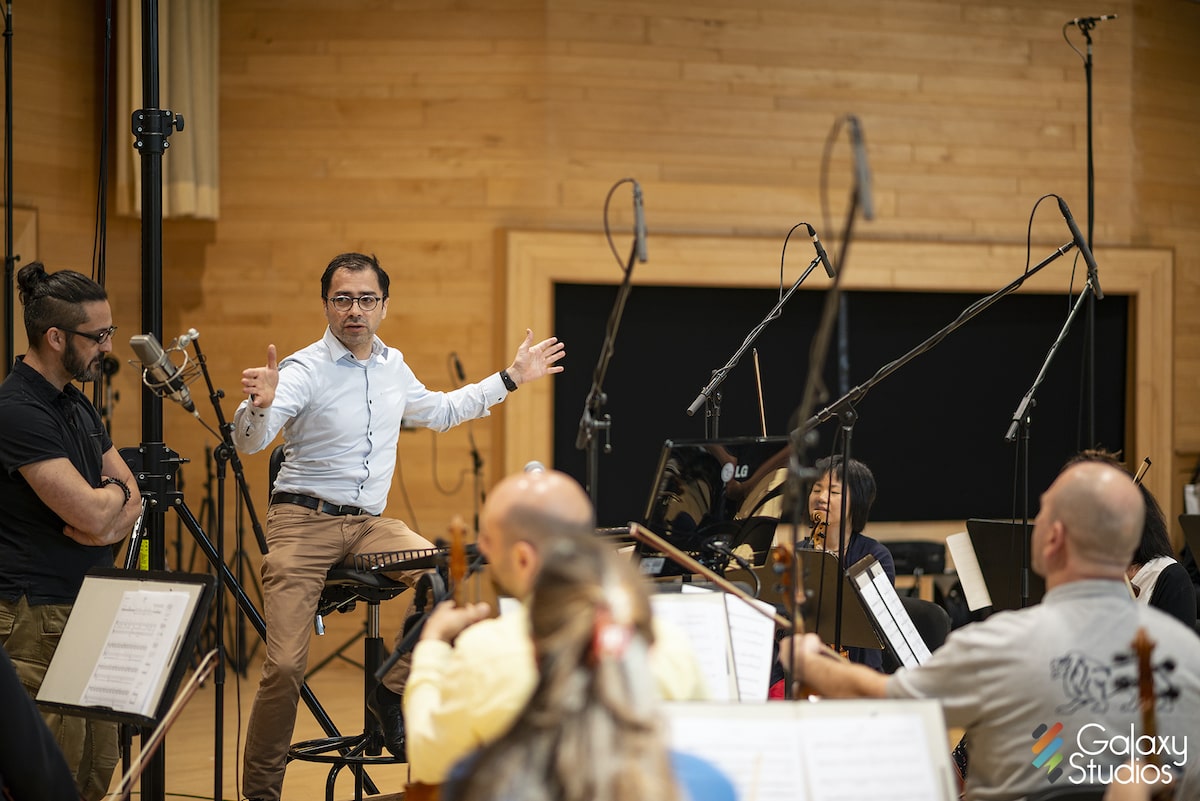
Behind composer Michelino Bisceglia’s new project Charlotte, starring Kiera Knightly
Throughout his career, Belgium-born composer Michelino Bisceglia has worked with several international orchestras and his films have been screened at many film festivals, including the Venice International Film Festival and Cannes. The film Marina, for which he created the soundtrack, won a World Soundtrack Award at the Public Choice Awards.
Recently, Michelino composed the orchestral score for the animated feature Charlotte, starring Kiera Knightly. He has also completed work on the deep and dark Irish film My Sailor, My Love, which was directed by Golden Globe nominee Klaus Härö.
We had the chance to speak with Michelino about his process for creating compositions, the elements of his score for Charlotte, and his upcoming projects.

Did you always know that you wanted to be a composer? What is your favorite part about the job?
No, I did not. But maybe that was my predestination to be a film composer. The early age sign was when I received a keyboard from my father when I was seven years old. I started to play on it, but I didn’t know what to play. I remember I heard some melody lines and tried to reproduce that on the keyboard. Many years later I found out that the notes I was looking for were the main theme by Nino Rota from the film “The Godfather.” Although I don’t remember seeing that film at that age, I must’ve heard that music somewhere at that time in some places. Years later my sister was working as a cashier for a film theater. She gave me the free ticket she received to go to the movies to me. So, I had unlimited access to the theater to watch any film I wanted to. But to be honest, I wasn’t that interested in watching films, I was interested in hearing the music and selecting the films based on the composer. That was a wonderful time for me to discover all the greatest composers around that time like John Barry, Elliot Goldenthal, Jerry Goldsmith, James Horner, John Williams, Ennio Morricone, and Alan Silvestri.
Since then, I have written countless scores for all kinds of orchestral line-ups for concerts, artist recordings, events, films, and TV. The first time I got in contact with music for the film was a job I was working on in the 90s for the animation series Symfollies. For this project, I had to rewrite famous classical music and adapt it to make it fit for the animation series. This was a great opportunity for me to get in contact with the greatest classical music, learn the score, and rewrite the animation. After 54 episodes, we developed a version for live concerts with a full orchestra and animation. With this production, I’ve conducted the Antwerp Philharmonic, The Japan Symphony Orchestra for its premiere in Tokyo, the Orchestra of Casa Da Musica in Porto, and more.
The most exciting part of the job is the recording sessions. Working with great musicians and wonderful orchestras, and hearing new compositions I’ve been working on for weeks and months playing for the first time!

What is your favorite instrument to play, write for, and or include in your scores?
As a musician, I never thought about my favorite instrument. For me, it was instantly the piano since I was a kid. But as a composer I really don’t have a favorite instrument to write for; I do like them all! In fact, the most beautiful instrument for me is the orchestra. An enormous setting with endless colors and infinite possibilities where any individual instrument has an equal value to use or to feature for a solo.
Can you walk us a bit through the elements of the score on Charlotte and how they supported the film’s narrative?
An important part of the soundtrack is the use of texture and specific timbre in the score to give some moments extra color. This was important as the style of the animation is quite sober and simple. I felt that this gave me a bit more to play with and I could experiment with.
Most of these elements came from the orchestra through the use of modern writing techniques and complex orchestrations.
With my production team during the research period, we also developed and created a large library of sound design elements that I used in the score based on samples and layers of the contrabass played by a soloist, but tweaked through effect pedals and granular processing.
Another important element was the use of the solo cello throughout the score. This was a very important element to give me the opportunity to always stay with Charlotte no matter the situation. Sometimes it was the person, but sometimes the artist and in other cases the young woman who was trying to build a life in very difficult times and circumstances.

What is your creative process like? Does it stay the same or does it vary between projects?
I started with sketches of composition when reading the script even before I had seen the first images. This gave me much more freedom to create an original musical framework to determine the melodic and harmonic material. But before that, I first consulted extensively with the filmmakers to discuss the story, the characters, the style, the tone, and the structure of the film. In some cases, there were already ideas regarding the music by the director.
Somehow, when reading the script, I managed to feel the pace of the film and hear the tone. I sometimes could very well imagine the music of the scenes while reading the script. Several important music cues were composed before I ever saw an image. After this, I started to process the musical material and start composing sketches. I then began to assign melodic material to certain characters or other aspects of the film. In this project, I had enough time in advance, so I worked out musical suites to try out all the material in a longer musical context.
Then I mocked up some cues and sent them over to the director and editors. In some cases, they started to use these during the early editing stage. This was crucial to avoid other temp music ending up in the film during the editing. Meanwhile, I also started to set up an assistant team because of the large scale of the music production.
This creative production process varies a little, depending on the music style of the score, the available time I have to compose, and the size of the production.

Do you have any other recent projects you are excited about and can share with us?
A few weeks ago I just finished a soundtrack for the new Irish drama film “My Sailor, my love,” by the Golden Globe-nominated Finnish director Klaus Härö. It was a great experience to work for this fantastic director. A beautiful film and very well directed! I felt the quality of the film in every frame. That was also a lot of fun for me to compose because I had several scenes where there was room to fill in musically widely through the wonderful drone shots of the sea and the beautiful coast of Ireland. The drama story in the film allowed me to go harmonically deep and dark. As with Charlotte, the soundtrack was composed for a large symphonic orchestra, and some soloists recorded in one of Europe’s greatest scoring stages, Galaxy Studios in Belgium.
–







